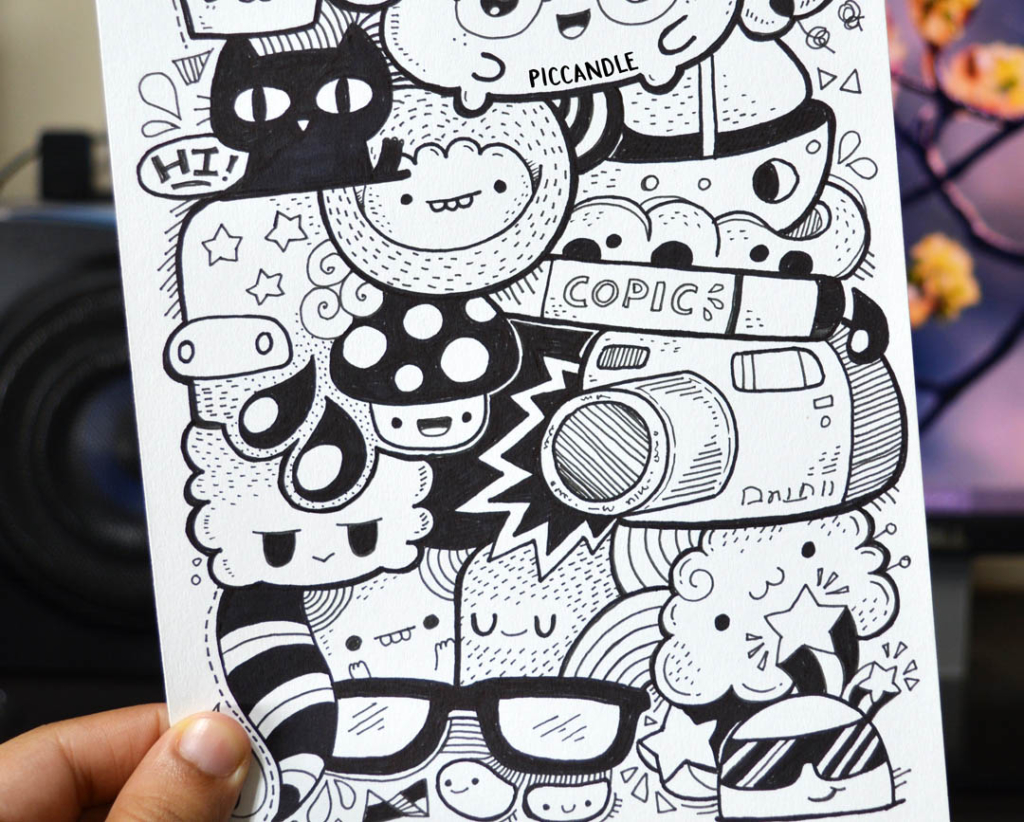
Drawing is a timeless form of artistic expression that has captivated humans for centuries. Whether you’re sketching on a piece of paper, doodling in the margins of your notebook, or creating detailed illustrations, drawing allows you to translate your thoughts, emotions, and visions into visual form. For beginners, the journey into the world of drawing can be both exciting and daunting. This article aims to guide you through the essentials of drawing, offering tips, techniques, and tools to help you master this art form.
Understanding the Basics of Drawing
Before diving into specific techniques, it’s important to understand the fundamental elements that form the basis of any drawing:
- Line: The most basic element of drawings, a line can vary in width, direction, and length. Lines can be used to define shapes, create textures, and convey movement.
- Shape: Shapes are created when lines enclose an area. They can be geometric (like circles, squares, and triangles) or organic, which are more free-form and irregular.
- Form: While shape is two-dimensional, form adds depth, making a shape appear three-dimensional. This can be achieved through shading and perspective.
- Texture: Texture refers to the surface quality of an object—how it feels or appears to feel. Artists use lines, shading, and other techniques to create the illusion of texture.
- Value: Value is the lightness or darkness of a color. In black-and-white drawings, value is crucial for creating contrast and the illusion of depth.
- Space: Space in a drawing refers to the area around, between, and within objects. Artists manipulate space to create a sense of depth or focus on specific elements of their work.
Essential Tools for Drawing
To get started with drawing, you’ll need a few basic tools. While there are countless materials available, beginners can start with these essentials:
- Pencils: A set of pencils ranging from soft (B) to hard (H) will allow you to experiment with different line qualities and shading techniques.
- Erasers: A good eraser is as important as your pencil. Kneaded erasers are particularly useful for lightening areas of your drawing without leaving residue.
- Paper: The type of paper you choose can affect the outcome of your drawing. For detailed work, smooth paper is ideal, while rough paper is better suited for texture.
- Sketchbook: A portable sketchbook allows you to practice drawing anywhere, anytime. Choose one with quality paper that can handle erasing and different types of media.
- Ruler and Compass: For precise lines and circles, a ruler and compass are essential tools.
- Blending Stumps: These are used to blend and soften pencil marks, helping to create smooth transitions between values.

Techniques to Improve Your Drawing Skills
Mastering drawing takes time and practice, but these techniques can help you improve faster:
- Gesture Drawing: Gesture drawing is a quick, loose method of capturing the essence of a subject. It’s great for practicing the human form or animals in motion. Spend just a few minutes on each drawing, focusing on the overall form rather than details.
- Contour Drawing: This technique involves drawing the outline of your subject without looking at the paper. It helps develop hand-eye coordination and trains your brain to observe details.
- Shading: Shading adds depth and dimension to your drawings. Practice using hatching (parallel lines), cross-hatching (intersecting lines), stippling (dots), and blending to create shadows and highlights.
- Perspective: Perspective is the technique that creates the illusion of depth on a flat surface. Start by learning one-point and two-point perspective, then gradually move to more complex forms.
- Negative Space Drawing: Instead of drawing the object itself, focus on the space around it. This technique helps you see the shapes and proportions more accurately.
- Practice Daily: Like any skill, drawing improves with regular practice. Set aside time each day to draw, even if it’s just for a few minutes.
Finding Inspiration for Your Drawings
Sometimes, the hardest part of drawing is deciding what to draw. Here are some ways to find inspiration:
- Nature: The natural world offers endless inspiration. Go outside and observe plants, animals, landscapes, and the sky. Try capturing the textures, forms, and colors you see.
- Art Museums: Visiting an art museum can expose you to different styles, techniques, and subjects. Take notes or sketch what inspires you.
- Photographs: Use photos as references, especially when practicing techniques like shading or perspective.
- Books and Online Resources: There are countless books, tutorials, and online communities dedicated to drawing. Learn from others and try out new techniques.
- Everyday Objects: Look around your home for objects with interesting shapes or textures. Try drawing them from different angles.
- Personal Experiences: Draw from your memories, dreams, or emotions. This can result in unique and personal works of art.
Overcoming Common Drawing Challenges
As you progress in your drawing journey, you may encounter some common challenges. Here’s how to overcome them:
- Proportions: If your drawings often look “off,” it could be an issue with proportions. Use a grid system, where you divide your reference image and drawing surface into equal squares, to help maintain accurate proportions.
- Confidence: It’s easy to get discouraged, especially when comparing your work to others. Remember that every artist was once a beginner. Focus on your progress rather than perfection.
- Creative Block: If you find yourself stuck, try switching up your routine. Draw with your non-dominant hand, experiment with a new medium, or take a break to clear your mind.
- Detail Obsession: While details are important, don’t let them overwhelm you. Start with the big shapes and forms, then gradually add details.
- Consistency: Developing a consistent style takes time. Experiment with different techniques and subjects to discover what you enjoy and where your strengths lie.
The Benefits of Drawing
Drawing isn’t just an artistic skill; it has numerous benefits for your overall well-being:
- Stress Relief: Drawing can be a meditative activity that helps reduce stress and anxiety. Focusing on creating art can provide a mental break from daily worries.
- Improved Observation: Drawing enhances your ability to observe the world around you. You’ll start to notice details, shapes, and patterns that you may have previously overlooked.
- Increased Creativity: Regular drawings stimulates creativity and problem-solving skills. It encourages you to think outside the box and explore new ideas.
- Boosted Confidence: As your skills improve, so will your confidence. Sharing your work with others, whether online or in person, can also build your self-esteem.
- Cognitive Development: For children and adults alike, drawing enhances fine motor skills, hand-eye coordination, and spatial awareness.
Conclusion: The Journey of Mastering Drawing
Drawing is a rewarding and fulfilling pursuit that offers endless possibilities for creative expression. Whether you’re a beginner or looking to refine your skills, the key is to keep practicing and experimenting. Embrace the process, learn from your mistakes, and most importantly, enjoy the journey of mastering the art of drawing. With dedication and patience, you can create drawings that not only capture the world around you but also reflect your unique perspective and creativity.








